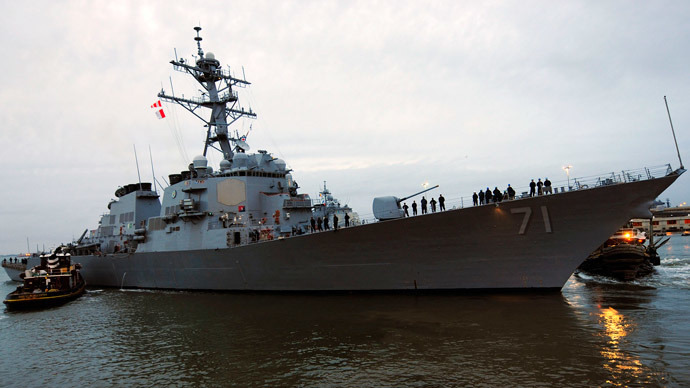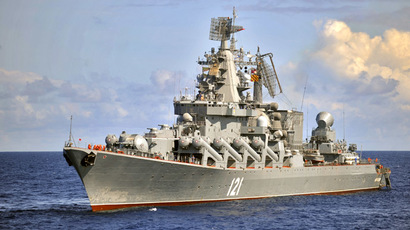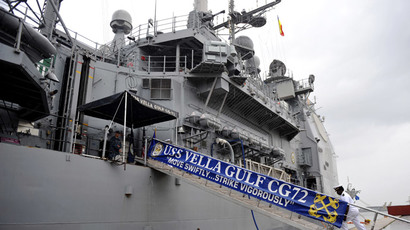‘Promoting peace and stability’: NATO warships enter Black Sea

A US Navy destroyer and, reportedly, a French frigate have entered the Black Sea, as NATO builds up its presence in the region while tensions remain high in Ukraine. Another two warships are expected to arrive in the area by the end of the week.
The US Navy 6th Fleet official command has confirmed on its official Twitter account that the destroyer USS Ross, (DDG 71), an Arleigh Burke-class guided-missile destroyer, is now in the Black Sea.
“USS Ross enters Black Sea, promoting peace and stability while working with NATO allies and partners,” a statement said.
The US Navy has stressed that “the Ross’ presence in the Black Sea serves to demonstrate the United States’ commitment to strengthening the collective security of NATO allies and partners in the region.”
“The US Navy maintains an enduring commitment to forward-presence throughout the region in order to have ready-forces available if a crisis were to occur,” the statement said.
Another NATO warship, France’s Commandant Birot, also arrived in Black Sea waters on Wednesday night, according to a military diplomatic source cited by the Itar-Tass news agency.
“Both ships have passed through the Bosphorus and entered the Black Sea between 21:00 and 22:00 Moscow time,” the source was quoted as saying.
Commandant Birot has joined another French warship, the Dupuy le Lome, a surveillance ship designed to collect signals and communications from beyond enemy lines. Up until September 4, the Dupuy le Lome was the only NATO ship in the region. The vessel is scheduled to leave the area on September 5.
A total of four NATO warships are expected to enter the Black Sea before September 7. The USS Ross and Commandant Birot will be joined by Canada’s HMCS Toronto, a Halifax-class frigate, and a Spanish frigate, the Almirante Juan de Borbon.

Under the Montreux Convention of 1936, warships of non-Black Sea states can stay in the Black Sea for no more than 21 days. It also stipulates that the maximum deadweight of a non-regional warship in the area should not exceed 45,000 tons.
NATO warships have been operating in the area since this spring, when tensions started escalating between Kiev forces and rebels in southeastern Ukraine.
Despite the three-week limit, the alliance has managed to secure its presence in the area by constantly rotating warships there.
Deployed to the region in mid-May, the Dupuy le Lome was preceded by the destroyer USS Donald Cook, sent to the Black Sea in early April.
In July this year, NATO deployed a total of nine vessels, setting a record for the post-Soviet period.
On August 7, the US missile cruiser Vella Gulf entered the Black Sea and left the region at the end of the month.
NATO has been discussing its “more visible” presence in Eastern Europe, referring to the three Baltic States – Latvia, Lithuania and Estonia – as there has been little progress in resolving the conflict in Ukraine. The issue is now being discussed in Wales, where the military alliance is meeting on Thursday and Friday.
The US and the international community have accused Russia of supporting opposition forces in southeastern Ukraine, accusations that have been denied by Moscow.
Russia has condemned NATO’s activities in the Black Sea and branded them a provocation that hinders the normalization of the situation in Ukraine.














